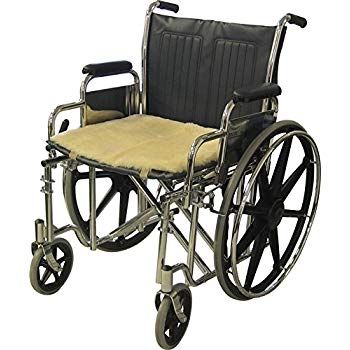1. Understanding Pressure Sores:
Pressure sores (also referred to as “pressure ulcers or bedsores”) are injuries caused by prolonged pressure applied directly or indirectly on specific parts of the body, leading to reduced blood flow and tissue damage. Wheelchair users can be especially susceptible due to constant exertion on bony prominences with limited fat and muscle tissue that leads to reduced circulation and tissue degradation.
2. Significance of Wheelchair Cushions:
Wheelchair cushions play a critical role in preventing pressure sores by redistributing pressure, reducing friction, and providing support. They relieve strain on vulnerable areas while improving blood circulation and overall comfort for wheelchair users. Choosing an appropriate wheelchair cushion can significantly decrease pressure sore risk while improving quality of life for users.
3. Key Elements of an Effective Wheelchair Cushion:
Pressure Redistribution:
The top wheelchair cushions for pressure sores are specifically designed to redistribute pressure evenly across their seating surfaces, using advanced materials and innovative designs that distribute pressure more evenly while attenuating pressure on high-risk areas such as the coccyx, sacrum, and ischial tuberosities.
Material Selection:
Wheelchair cushions come in various materials, such as foam, gel and air cells. Each material provides its own set of advantages in terms of support, comfort and pressure relief; gel cushions offer greater pressure redistribution capabilities while air cells offer customisable support for dynamic pressure management.
Contoured Design:
For proper alignment and pressure point reduction, an ergonomic and contoured design of wheelchair cushions with contoured shapes are an indispensable asset. They support the natural curvatures of both spine and pelvis to prevent tissue breakdown or pressure sore formation and sores from developing over time.
Moisture Management:
Achieve proper moisture management is vital to avoiding skin breakdown and irritation. Wheelchair cushions with breathable covers and moisture-wicking capabilities help keep skin dry, comfortable, and free of infection; helping reduce risk for maceration or maceration altogether.

Durability and Maintenance:
A top-of-the-line wheelchair cushion should be durable yet easy to care for, without losing its shape or supporting properties over time. Removable and washable covers make cleaning and maintaining simple while prolonging its lifespan.
4. Types of Air Cushion for Bed Sores:
There are various kinds of wheelchair cushions on the market, each tailored to meet different needs and preferences:
Foam cushions provide basic support and pressure relief, making them suitable for users at low to moderate risk of pressure sores. Its Gel cushions offer outstanding pressure redistribution and stability – ideal for users at moderate to high risk of pressure sores.
Air Cushions: Utilising air cells, these cushions utilize dynamic pressure distribution suitable for users with varied needs and preferences.
Selecting the ideal air cushion for bed sores to protect skin integrity and ensure comfort for wheelchair users is of vital importance in maintaining skin integrity and providing maximum support. Consider factors such as pressure redistribution, material selection, contoured design, moisture management and durability when making this important choice. By investing in high-quality cushions tailored specifically for each user’s specific needs and avoiding risk of pressure sores altogether, individuals can reduce the chance of pressure sores while experiencing enhanced mobility and well-being.




